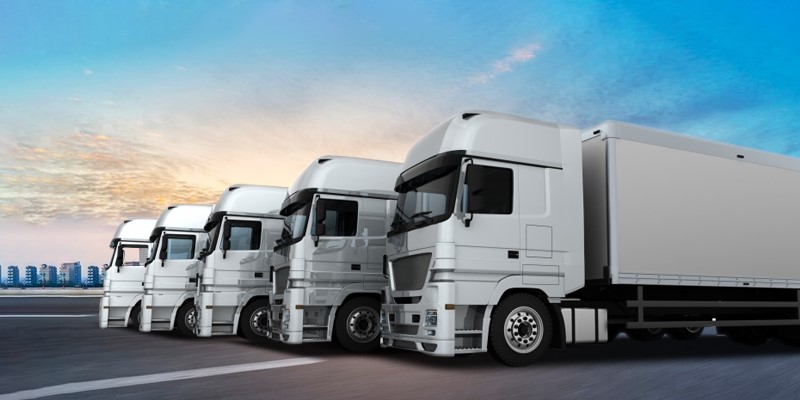The advent of autonomous driving technology has the capability and potential to bring in a paradigm shift in the entire transportation industry.
However, the stakeholders are pining for high hopes precisely with the integration of autonomous trucks into the framework of logistics and freight services.
Moreover, this tectonic shift holds the potential not only to change the entire transport approach but also to significantly enhance road safety, which has been a major concern.
These vehicles are all set to begin to share roads with human drivers. At this point in time, developing insight into the impact of autonomous trucks on road safety finds both logic and pertinence.
Written by Columbus truck accident attorneys, this article explores the various ways in which autonomous trucks could improve safety. Moreover, the article addresses current challenges and reshapes the future of road travel.
Enhanced Safety Through Technology

Autonomous trucks arm themselves with the most high-tech sensors, radar, cameras, and the use of sophisticated technology like artificial intelligence (AI).
It enables them to perceive and react to the developments taking place on the highway. Moreover, autonomous vehicles can understand the environment with far more accuracy than humans.
However, these systems can detect obstacles, read the signals of the traffic, and maintain awareness of surrounding vehicles.
Ultimately, they can provide a level of consistency and reaction time that surpasses human capabilities.
1. Reduced Human Error:
Most road accidents are caused due to human neglect and errors. The major human errors include distractions, fatigue, and impaired driving. One can not fix them because humans have their limitations.
Autonomous trucks can mitigate the risk by operating under algorithms that prioritize safety and compliance with traffic norms and standards.
Moreover, these vehicles’ decision-making adeptness could drastically reduce the number of accidents on highways and urban roads.
2. Improved Traffic Flow:
Autonomous trucks can establish communication with each other and with road infrastructure. They will do it with the help of vehicle-to-everything (V2X) communication technologies.
Ultimately, it requires optimized speed control, efficient lane usage, and synchronized driving patterns. This is how they will bring down the the likelihood of traffic jams and collisions caused by human errors.
3. 24/7 Operational Capability:
Unlike human drivers, autonomous trucks can operate around the clock without the need for breaks or rest.
Consequently, it will reduce the pressure to meet delivery deadlines, which often leads to speeding or negligent driving. This continuous operation capability could also help evenly distribute freight traffic throughout the day, thus reducing overall traffic density.
Addressing Safety Challenges

While the benefits are significant, the deployment of autonomous trucks also presents new safety challenges that must be addressed to fully realize their potential.
4. Technology Reliability:
Ensuring the reliability of autonomous technology is paramount. This includes robust performance in diverse weather conditions and complex traffic scenarios.
However, continuous advancements in sensor technology and AI are crucial to prepare these vehicles for all possible challenges they might encounter on the road.
5. Cybersecurity:
As with any connected technology, autonomous trucks are susceptible to cybersecurity threats.
A breach could lead to loss of control over the vehicle, posing serious safety risks.
However, through strengthening cybersecurity measures and establishing stringent regulatory standards will be essential to safeguard these vehicles against attacks.
6. Integration With Human-Driven Vehicles:
For the foreseeable future, autonomous trucks will need to coexist with human-driven vehicles.
Moreover, developing standardized protocols for how these trucks interact with conventional vehicles will be key in preventing accidents. At the same time, they ensure a smooth transition to a more automated road environment.
Potential Impacts on Road Safety
The introduction of autonomous trucks is expected to have profound impacts on road safety.
7. Decrease In Accident Rates:
By removing factors such as driver fatigue and error, autonomous trucks could significantly reduce the number of vehicle accidents, particularly those involving large trucks, which are often severe and fatal.
8. Safety In Long-Haul Driving:
Long-haul routes could benefit immensely from autonomous trucks, which can drive for extended periods without concerns about losing focus or effectiveness, potentially reducing crash rates on rural highways.
9. Environmental Benefits:
Improved efficiency in driving patterns and reduced traffic congestion also contribute to lower emissions, creating a healthier environment that indirectly benefits overall societal health.
Technology And Operations Of The Autonomous Trucks
As far as autonomous trucks are concerned, the last we need to hear is that they aren’t technologically advanced. The market is literally flooded with trucks that are highly operative and work completely on technological aspects. But for a better understanding, here’s what you need to know!
Technology
Autonomous trucks have advantages over drivers, and they have been proving their mettle in the transportation sector. However, there are some glitches with the technology.
Notwithstanding this, the advantages are far ahead. Consequently, its acceptance and popularity are increasing with time in the USA.
In this section, let’s discuss the technology and operations of autonomous vehicles. Autonomous vehicles equip themselves with the latest technology. It is still evolving.
However, autonomous vehicles are equipped with onboard computing and sensor arrays, such as cameras, radar, and lidar. They support automated driving software.
The developers of these vehicles are aiming for unmanned operation domains along with specific routes and automation.
Operations
Autonomous trucks are on the way to become the next new normal. It is brimmed with opportunities. However, according to the study, around 65% of the consumable goods get trucked to the markets.
It may be that the autonomous vehicle will be costly at the initial stages. However, with complete autonomy, the operating costs would decline by up to a massive 45%. Ultimately, it will save the entire industry a whopping $85 billion and even more.
Reduced Labor Cost
One of the most significant aspects of autonomous vehicles is that it can reduce the labor cost. You may understand that there is always a need for a professional driver to drive long routes. Moreover, attracting and retaining them has become difficult over time.
However, with the advent of autonomous trucks, companies are cloud-shifting some of the jobs from the long-haul truckload operations.
Consequently, turnover will be reduced to quite an extent. This is where the truck industry is looking to replace human labor with the help of technology.
Reducing Carbon Emission
The manufacturers of automated vehicles claim that the technology will turn out to be fuel-saving in the future. Moreover, in the long run, autonomous vehicles will run much more smoothly than traditional vehicles.
However, you may know that a sizeable portion of the emissions is due to the transportation sector. The emissions from vehicles, especially heavy vehicles, are attributed to increased levels of pollution and the burning of fossil fuels.
Redundant System For Safety
Without the drivers behind the vehicles, the autonomous driving trucks will be powered by additional components.
The manufacturers of this system use secondary breaking and steering systems, cybersecurity safeguards and backups, and redundant powertrain controls.
However, manufacturers have already introduced advanced assist systems to build safety nets. Some of the technologies pre-exist in the markets, and they include electronic stability control, emergency breaking, land departure warning, and adaptive cruise control.
Conclusion
Autonomous trucks offer a promising future for road safety, presenting opportunities to reduce accidents, enhance traffic management, and revolutionize the transport of goods.
As technology advances and becomes more integrated into our logistics systems, it is essential to continue addressing the challenges and risks associated with autonomy. Through careful regulation, ongoing technological refinement, and public acceptance, autonomous trucks can significantly alter the landscape of road safety, paving the way for a safer and more efficient transportation system.
Read Also:




























